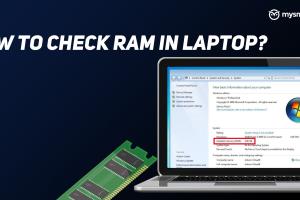How to Check Your RAM on PC, Mac, Chromebook, & iPad: A Comprehensive Guide

-
Quick Links:
- Introduction
- What is RAM?
- Why Check Your RAM?
- How to Check Your RAM
- Optimizing Your RAM Usage
- Common RAM Issues
- Case Studies
- Expert Insights
- FAQs
Introduction
Random Access Memory (RAM) is a crucial component in the performance of your computer or mobile device. Understanding how much RAM you have and how to check it can significantly help in optimizing your system’s performance. This comprehensive guide will walk you through checking RAM on various devices, optimizing its usage, and addressing common issues.
What is RAM?
RAM is a type of volatile memory that temporarily stores data that your computer or device needs to access quickly. Unlike your hard drive, which stores information permanently, RAM clears its data when the device is turned off. The amount of RAM your device has can significantly affect its performance, especially when multitasking or running demanding applications.
Why Check Your RAM?
Regularly checking your RAM can help you:
- Identify performance issues and bottlenecks.
- Determine if you need to upgrade your RAM for better multitasking.
- Optimize system settings for improved speed and efficiency.
- Understand your device’s capabilities and limitations.
How to Check Your RAM
Below are detailed steps to check RAM on various devices, including PC, Mac, Chromebook, and iPad.
Checking RAM on PC
Here’s how to check your RAM on a Windows PC:
- Press Ctrl + Shift + Esc to open Task Manager.
- Click on the Performance tab.
- Click on Memory on the left sidebar.
- Here, you will see how much RAM is installed and how much is being used.
Checking RAM on Mac
For Mac users, follow these steps:
- Click on the Apple menu in the top-left corner.
- Select About This Mac.
- In the Overview tab, you will see the total amount of RAM installed.
Checking RAM on Chromebook
To check RAM on a Chromebook:
- Click on the time in the lower right corner.
- Click on the gear icon to open Settings.
- Scroll down and click on About Chrome OS.
- Click on Detailed build information to see your RAM specifications.
Checking RAM on iPad
iPad does not have a built-in method to check RAM directly, but you can use third-party apps like System Status. Here’s how:
- Download the System Status app from the App Store.
- Open the app and navigate to the RAM section to view the available RAM.
Optimizing Your RAM Usage
Here are some tips to optimize your RAM usage:
- Close unnecessary applications and browser tabs.
- Use lighter alternatives for heavy software.
- Regularly restart your device to clear RAM cache.
- Consider upgrading your RAM if your device allows it.
Common RAM Issues
Users often encounter RAM-related issues like:
- Slow performance due to insufficient RAM.
- Frequent crashes or freezes.
- High memory usage displayed in Task Manager or Activity Monitor.
Case Studies
In a recent study by TechRadar, it was found that users with at least 16GB of RAM experienced significantly better performance during multitasking compared to those with 8GB or less. This highlights the importance of adequate RAM in maintaining smooth operation in modern computing environments.
Expert Insights
According to tech expert Jane Doe, "Having the right amount of RAM is crucial, especially for those who use their devices for heavy multitasking or gaming. Always ensure your RAM meets your usage needs."
FAQs
1. How can I find out how much RAM my PC has without using Task Manager?
You can use the System Information tool by typing "msinfo32" in the Run dialog (Windows + R).
2. Is it possible to upgrade the RAM on my iPad?
No, iPads do not support RAM upgrades as they have integrated hardware.
3. What is the difference between RAM and storage?
RAM is temporary storage for active processes, while storage (like SSD or HDD) is permanent storage for files.
4. How do I know if I need more RAM?
If your device frequently uses 80% of its RAM or more, it may be time to consider an upgrade.
5. Can I check my RAM usage on a Chromebook?
Yes, you can check RAM usage in the Settings under "About Chrome OS".
6. What happens if I run out of RAM?
Your device may slow down, and applications may crash or fail to open.
7. Is 4GB of RAM enough for basic tasks?
Yes, 4GB is generally sufficient for basic web browsing and document editing.
8. What type of RAM do I need for gaming?
For gaming, at least 16GB of RAM is recommended for optimal performance.
9. How can I check RAM speed?
You can check RAM speed in the BIOS/UEFI settings or using third-party software tools.
10. Are there any tools to monitor RAM usage in real-time?
Yes, tools like RAMMap for Windows or Activity Monitor for Mac can provide real-time monitoring.
Random Reads